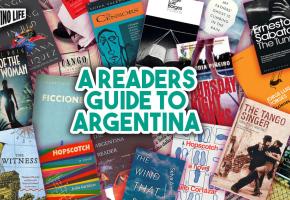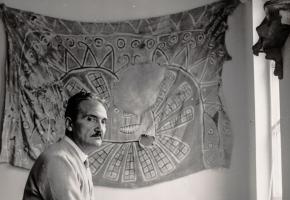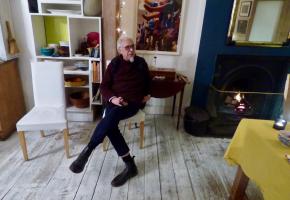The book under review by the great Spanish Poet Federico García Lorca Sketches of Spain is particularly special. Its lucidly fluid English translation by Peter Push from its original Spanish Impresiones y Paisajes (Impressions and Landscapes) provides unique insights into the life and early aesthetic sensibilities of Lorca, and Spain more broadly with its diverse landscapes and historical riches. Not least because Lorca wrote it when he was aged just seventeen [published at nineteen], it demonstrates his genius. Spain finds its soul, heart and mind rendered beautifully in this book. Lorca attempts to make what he sees speak; and whatever the result, it is often excitingly insightful, stuffed with elegant spiritual sentimentality. In essence, Lorca gives voice to a sense of eternal silence permeating his vision and heart, which he evokes unabatedly through the mirror of natural and human objects with which his eyes interact with lyrical intensity and sympathy. In this, Lorca leaves no stones unturned in his portrayal of churches, buildings, sunsets, ruins and human characteristics across Spain.
The origins of the book, as Peter Bush writes in the introduction, lie in field trips organised by Lorca’s literature Professor at Granada University, Martín Domínguez Berruetta who ‘planned the trips so that his students would visit key sites in the history of Spanish culture, study their art and architecture and then write up their experiences’ (p.9). The book is enriched and enlivened by the illuminating illustrations of the painter and Guardian writer Julian Bell.
Lorca’s dedication to his music teacher at the outset is instructive in how we read the book. It shows Lorca’s mature sensitivity to history, music, human kindness and the bearers of these values as such infusion results in holistic soundness: “to the respected memory of my old music teacher whose gnarled hands so often pulsated on the piano and inscribed rhythms on the air, hands he ran through his twilight silvery hair like a smitten gallant suffering passions invoked by a Beethoven sonata. A saint!” Memory, music as an act of human creation, endurance and affiliation with its translators, such as Beethoven, are not infrequent themes in the book. Wherever Lorca looks, he is keen to conjure up beauty and condemn depravity, closeness and human waste. Spain of his time bore witness to all these. This can be seen in his portrayal of the city of Castile: “the whole of Spain’s past and almost entire present is palpable in the solemnly august cities of Castile” (p.24).
Lorca is known for passion in his poetry and plays in general. The symbolism he employs to invoke passion is well-developed, even if reiterative and excessive at times. Throughout the book, the deathly power of silence and death itself, the utter basking in melancholy and the infinite faith in hope make for dramatic and wholesome prose with its seeds in bristling poetry: “cities of Castile, you are full of a mysticism that is so strong and sincere you still the soul!” (p.26). Lorca does not only read into what he sees, he makes what he sees reads his own soul in the identity of the place. In this, Lorca becomes an integral part of the setting, always present and attentive to the past that manifests itself where there are traces of engaged human embodiment. Thus, in the Castilian city of Ávila, “the shadows from the past embedded in the temple’s walls create an oppressive interior and the tranquil darkness invites meditation on what is supreme…” (p.31).
The supreme in Lorca is often unspoiled nature, sublime art and times invested with genuine humanity. Lorca, playfully solemn in his own right, judges priestly religious rigidities that permit no renewal or aesthetic openness with severity. In Santo Domingo de Silos, he laments the scene of monks out of their depth: “the monks officiating are men with weather-beaten complexions who walk at an indecent pace, their black, impure hands brisling with tufts of hair, men nature has cruelly punished” (p.90). He wants women to do the enchanting: “Women should perform these priestly tasks with hands like pink Madonna lilies, immersed in a sea of white lace…” (p.90). Whilst this is romantic, it has an important political point: The masculinity of the church, indeed most religions, is overbearingly stifling.
In general, Lorca is a figure of colour and motion, even if inbuilt in silence. It is as if he wants his writing to speak up in this silence; this is so palpable in this book: “voices that sounded prophetic in the silence” (p.80). He is vividly enlivened where the gift of life is manifest as much in the place as in the soul. Arts, buildings and scenes that feed the heart and the mind, sharpen the senses and expand the horizons strengthen his insights. It is the act of genuine human creations that induces animated interaction that appeals to Lorca. Thus in harmony with Nietzsche before him, Lorca writes that “sculpture is a cold art, off-putting to the artist. His source of passion collides against the stones he carves…[he] cannot open the sacred book of sweet subtlety within them where the rest of humanity can read emotions that would lead them into the solitary garden of dreams…they reproduce…never create…”(p.48). The young Lorca dwells in subjectivity. But it is all the more admirable that he recognises and admits it. And in this, there is a relief; since one can imagine that sculpture for its faithful practioners must be an animated source of spirituality and fulfilment: more than dead stones being reproduced in various forms.
What further is fascinating about Lorca is that he has an eye against injustice, historical travesties and human waste, which makes his book an invaluable document with diverse and transferable insights. In the many journeys throughout Spain, Lorca extricates continuity from sound, soulful past that lives in buildings which greedy capitalist urbanity has insidiously overshadowed. When he finds that plaza de la cruz verde in Baeza, finely illustrated by Julian Bells, is under threat, he rails against the reigning system: “They will demolish this delightful old spot and put in its place buildings made from Catalan cement. What is happening in Spain to architectural relics is most distressing…everything is being turned topsy-turvy…by the most deplorable artistic vision” (p.117). Lorca’s politicisation is so early, but often acute and grounded in the reality of a world beset with inequalities and considerable insensitivity to history and its riches: “The heart feels a great need to weep and a tremendous desire for equality” (p.188). From this standpoint, the incomparably gruesome ongoing destruction of history in Syria, and Iraq before that, calls out for Lorcan voice. Lorca enlarges the scope of sight as he combines political actions and implications with artistic necessity as a guarantor against morbidity. To this end, Lorca reserves his highest scores of admiration for Granada with what it hosts of fine buildings and gardens as a witness to human ingenuity. Yet, at times, Lorca juxtaposes images of brightness and darkness for dramatic effects in a way that shows the mark of exotic political stereotyping on him: “Reminders of the Arab past are everywhere. Soot-black arches, squat, paunchy houses with ornate galleries, mysterious hovels with oriental lines, women who have apparently just escaped from a harem… A vagueness in the way people stare as if they dream of time past…and crushing weariness” (p.137).
Last but never least with Lorca, it should not be forgotten that he was abducted from his home in Granada and assassinated at the age of thirty eight at the suspected hands of fascist (Francoist) forces in Spain. He so prophetically, even if unconsciously, alluded to the darkness of such forces throughout his vocation of visionary writing. This is notwithstanding, Lorca’s romanticism and profound and realistic humanism reach its apogee in his faith in hope and beauty as sources of grace and responsible and enduring possibility:
“We continually hope to find something spiritual or full of beauty so we can unburden our souls of their main source of sorrow…and we always hasten, impelled by desire for that impossible happiness… we almost never achieve such a state: form alone varies; essences remain unchanged” (p.179).



















